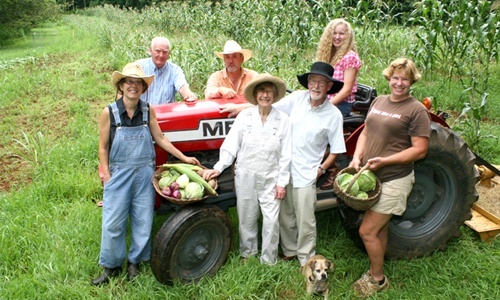
90% of Americans Could Be Fed by Food Grown or Raised Within 100 Miles of Their Homes

With additional support from the University of California Global Food Initiative, he found there is enough land to assure that eating locally doesn’t have to be a passing fad.
“These results are very timely with respect to increasing interests by the public in community-supported agriculture, as well as improving efficiencies in the food-energy-water nexus,” said Bruce Hamilton, program director for the National Science Foundation, which supports a spectrum of emerging technologies that might help alleviate growing agricultural demands.
Feeding cities
Campbell and his students looked at the farms within a local radius of every American city, then estimated how many calories those farms could produce. By comparing the potential calorie production to the population of each city, the researchers found the percentage of the population that could be supported entirely by food grown locally.
The researchers found surprising potential in major coastal cities. For example, New York City could feed only 5 percent of its population within 50 miles but as much as 30 percent within 100 miles. The greater Los Angeles area could feed as much as 50 percent within 100 miles.
Diet can also make a difference. For example, local food around San Diego can support 35 percent of the people based on the average U.S. diet, but as much as 51 percent of the population if people switched to plant-based diets.
Campbell’s maps suggest careful planning and policies are needed to protect farmland from suburbanization and encourage local farming for the future.
“One important aspect of food sustainability is recycling nutrients, water and energy. For example, if we used compost from cities to fertilize our farms, we would be less reliant on fossil-fuel-based fertilizers,” Campbell said. “But cities must be close to farms so we can ship compost economically and environmentally. Our maps provide the foundation for discovering how recycling could work.”
YOU MIGHT ALSO LIKE
9 Ways to Support Your Local Food Community
12 Must-See Food Films That Will Inspire You to Take Action
Neil Young Blasts Starbucks for Supporting Monsanto and GMOs in Rock Anthem

 233k
233k  41k
41k  Subscribe
Subscribe 
